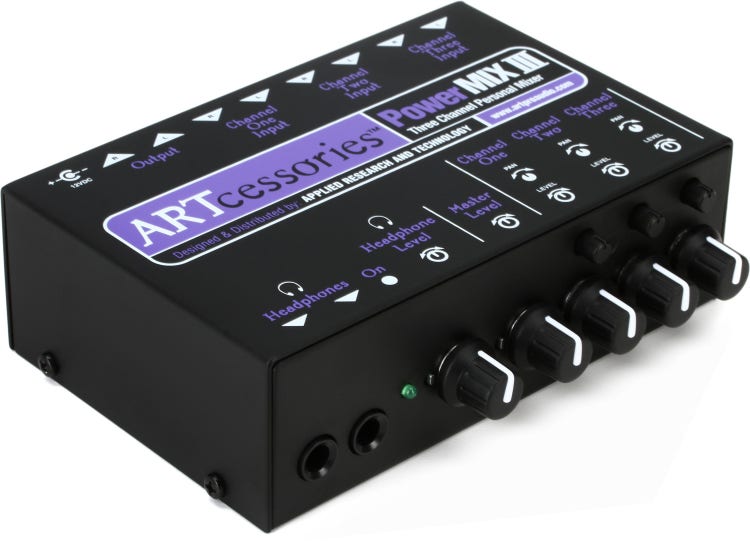Electric guitars are an essential element in many music genres, and getting the right mix for them is crucial for achieving a professional sound. In this comprehensive guide, we will explore the essential techniques and tips for mixing electric guitars to help you create powerful and captivating tracks.

Credit: ironageaccessories.com
Understanding the Basics
Before diving into the mixing process, it’s important to understand the basic components of an electric guitar sound. This includes the guitar tone, playing style, and the choice of amplifiers and effects. Each of these factors plays a crucial role in shaping the overall sound of the electric guitar in a mix.
Eq And Tone Shaping
One of the key steps in mixing electric guitars is using EQ to shape the tonal characteristics. By cutting or boosting specific frequencies, you can enhance the clarity and presence of the guitar in the mix. It’s essential to pay attention to the low-end frequencies that can muddy the mix and the high-end frequencies that can add definition and brightness to the guitar tone.
Compression And Dynamics
Applying compression to electric guitars can help control the dynamics and ensure a more consistent and polished sound. By using a suitable compressor, you can smooth out the transient peaks and bring out the sustain, ultimately making the guitar sit better in the mix while maintaining its natural dynamics.
Reverb And Delay
Adding reverb and delay can contribute to the spatial and atmospheric characteristics of the electric guitar sound. Carefully dialing in the right amount of these effects can create depth and dimension, enhancing the overall sonic impact of the guitar within the mix.
Utilizing Panning and Layering
Panning and layering are powerful techniques that can significantly impact the perceived width and depth of the electric guitar in a mix. By strategically panning multiple guitar tracks and layering different tones, you can create a rich and immersive sound that fills the sonic spectrum.
Creating A Solid Foundation
To achieve a solid foundation for the electric guitar mix, it’s important to ensure that the low-end frequencies are well-defined and sit cohesively with the other instruments in the mix. Using high-pass filters and careful EQ adjustments can help carve out space for the low end while allowing the guitars to shine through the mix.
Layering For Texture And Depth
Layering multiple guitar tracks with varying tones and effects can add texture and depth to the overall sound. This approach allows you to create a larger-than-life guitar tone that can cut through the mix and deliver a captivating sonic experience for the listeners.

Credit: www.sweetwater.com
Maintaining Clarity and Balance
Clarity and balance are essential for ensuring that the electric guitars blend seamlessly with the other instruments in the mix. By employing careful frequency carving and dynamic processing, you can achieve a balanced and well-defined guitar sound that complements the entire musical arrangement.
Essential Mixing Techniques
Utilizing techniques such as side-chain compression, multiband processing, and parallel compression can further enhance the clarity and impact of electric guitars in a mix. These advanced mixing techniques allow you to fine-tune the dynamics and tonal characteristics, ensuring that the guitars cut through the mix with precision.
Final Touches and Fine-Tuning
Adding the final touches and fine-tuning the electric guitar mix is the last crucial step in the process. This involves critically listening to the overall balance, making subtle adjustments to the EQ and compression settings, and ensuring that the guitars contribute to the sonic landscape in the most compelling way.
Automation And Expression
Applying automation to individual guitar tracks can bring out expressive nuances and create dynamic variations throughout the song. By automating parameters such as volume, panning, and effects, you can infuse the guitar parts with expressive character and elevate the overall emotional impact of the music.
Double-checking The Mix
After completing the initial mix, it’s essential to take a step back and double-check the electric guitar balance in the context of the entire mix. This ensures that the guitars are sitting perfectly within the sonic landscape, contributing to the energy and emotion of the music without overpowering other elements.
Frequently Asked Questions For Mixing Electric Guitars: Master The Art Of Sonic Power
What Are The Best Electric Guitar Mixing Techniques?
To get a great sound, use EQ, compression, blending, and panning strategically in the mix.
How Do I Prevent Muddiness In My Electric Guitar Mix?
Cutting frequencies around 200-400 Hz can reduce muddiness in the mix of electric guitars.
Why Is Stereo Imaging Important In Electric Guitar Mixing?
Stereo imaging can create a wider soundstage, enhancing the overall impact and depth of the mix.
How Can I Make My Electric Guitar Stand Out In A Mix?
Try adding subtle delays or reverbs, using side-chain compression, or experimenting with different EQ settings.
Conclusion
Mastering the art of mixing electric guitars requires a combination of technical expertise, creative vision, and attentive listening. By implementing the techniques and considerations outlined in this guide, you can elevate the electric guitar tracks in your mix to new levels of sonic excellence, ultimately delivering compelling and impactful music that resonates with your audience.